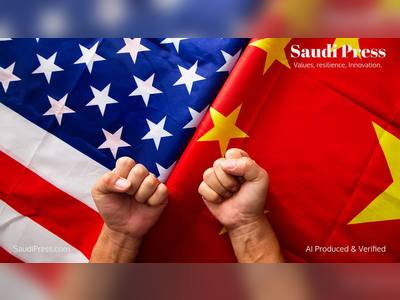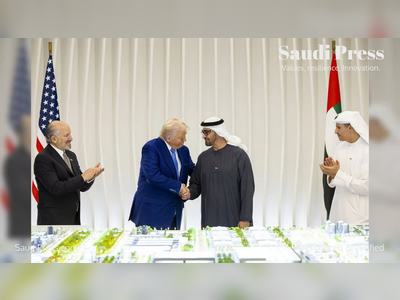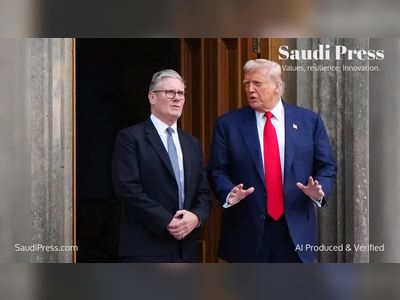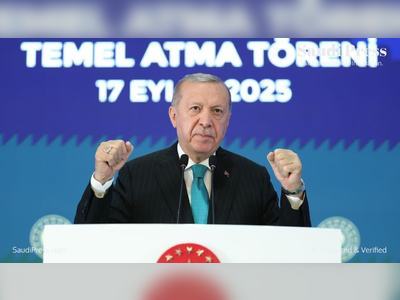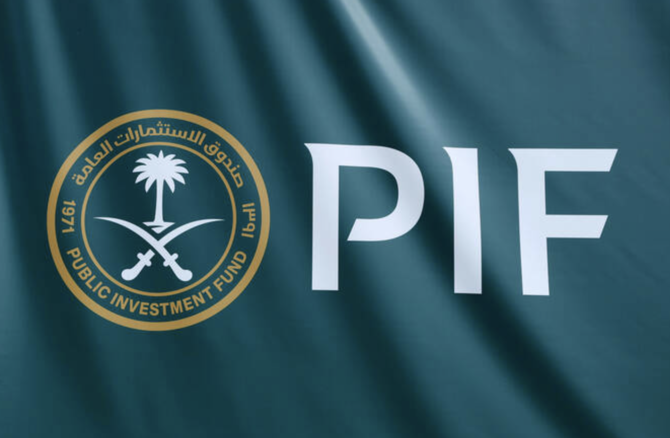
Saudi Arabia's Public Investment Fund Adopts 'Precision Finance' Debt Strategy
The fund is diversifying its debt issuance approach to align funding tools with investment timelines.
Riyadh: The Public Investment Fund (PIF) of Saudi Arabia is transitioning towards a multi-instrument approach for its debt issuance, which Global SWF describes as embodying 'precision finance.' This shift follows the introduction of a commercial paper program in June, aiming to synchronize PIF's funding mechanisms with its investment horizons, liquidity requirements, and target investor profiles.
The strategy emphasizes financial prudence across PIF's broadening portfolio.Global SWF reports that PIF is veering away from singular long-term bond issuances towards an agile debt framework incorporating commercial paper, sukuk, green bonds, and multi-tranche conventional bonds.
This approach seeks not only to raise capital but also to do so with precision by matching the maturities of its borrowings with project lifespans and diversifying funding sources on a global scale.The fund's latest maneuvers have culminated in a comprehensive debt portfolio comprising ultra-short to ultra-long maturity instruments.
The commercial paper, issued through offshore special-purpose vehicles in US dollar and euro denominations, has been rated Prime-1 by Moody’s and F1+ by Fitch—reflecting the exceptional credit quality that grants PIF access to substantial liquidity among institutional investors like money market funds.PIF's borrowing strategy encompasses a range of offerings tailored to specific financial objectives.
It includes a $3 billion 100-year green bond from October 2022, a $5.5 billion green bond issued in February 2023, a $3.5 billion sukuk from October 2023, and various multi-tranche bonds and sukuk until early 2025.The evolution of PIF's financial strategy is closely tied to its broader transformation under Vision 2030.
Since 2016, the fund has grown its assets under management (AUM) from $160 billion to $941.3 billion, with its 2030 AUM target now set at $2.67 trillion due to an expanded mandate and enhanced international standing.PIF's investment strategy is evenly divided between domestic initiatives and global sectoral investments, including technology, logistics, mining, and tourism.
The Vision 2030 report indicates that PIF's efforts have facilitated the creation of 1.1 million jobs, attracted over $37 billion in private capital, and increased the number of PIF-established companies from 45 in 2021 to 93 by 2024.A Novel Approach Among Sovereign Wealth FundsWhile sovereign wealth funds like Norway's NBIM remain debt-free, others such as Singapore's Temasek and China Investment Corporation borrow sparingly.
PIF has opted for a hybrid model that combines equity injections from the government with strategic deployment of debt instruments.Global SWF characterizes this approach not as opportunistic borrowing but as deliberate asset-liability matching.
PIF is said to be issuing long-dated bonds to support large-scale projects like NEOM or The Line, using short-term debt for working capital and market-timed investments.Sukuk offerings are meant to tap into the regional Islamic finance market, while green bonds target global environmental and social governance-focused investors.
This diversified strategy broadens PIF's investor base without incurring funding costs misaligned with its projects' nature and duration.The fund's strong long-term credit ratings—Aa3 from Moody’s and A+ from Fitch—confirm its low-risk profile, granting it easy access to global institutional liquidity.
Global SWF notes that these ratings, along with a diversified issuance format, place PIF among a small group of sovereign wealth funds capable of managing complex multi-layered debt programs.Saudi Arabia currently faces a tighter fiscal environment, projected for 2025 at a budget deficit of 2.3 percent, necessitating a more disciplined approach to public spending.
According to Global SWF, PIF's access to capital markets is strategic, enabling ongoing project execution without straining state reserves.The fund's recent bond and sukuk calendar illustrates a sequenced funding plan rather than reliance on a single issuance type, which is particularly important amid volatile global interest rates and increased scrutiny of sovereign debt sustainability by investors.PIF treats debt as an integral part of its financial strategy, systematically deploying it according to tenor, purpose, and investor group.
This approach supports the fund's vision for economic diversification and global investment leadership, amounting to $2.6 trillion under Vision 2030.As Saudi Arabia nears the conclusion of Vision 2030 implementation, PIF's capital strategy presents a case study in how sovereign wealth funds can align financial discipline with market sophistication and national ambition under an integrated financing framework.
The strategy emphasizes financial prudence across PIF's broadening portfolio.Global SWF reports that PIF is veering away from singular long-term bond issuances towards an agile debt framework incorporating commercial paper, sukuk, green bonds, and multi-tranche conventional bonds.
This approach seeks not only to raise capital but also to do so with precision by matching the maturities of its borrowings with project lifespans and diversifying funding sources on a global scale.The fund's latest maneuvers have culminated in a comprehensive debt portfolio comprising ultra-short to ultra-long maturity instruments.
The commercial paper, issued through offshore special-purpose vehicles in US dollar and euro denominations, has been rated Prime-1 by Moody’s and F1+ by Fitch—reflecting the exceptional credit quality that grants PIF access to substantial liquidity among institutional investors like money market funds.PIF's borrowing strategy encompasses a range of offerings tailored to specific financial objectives.
It includes a $3 billion 100-year green bond from October 2022, a $5.5 billion green bond issued in February 2023, a $3.5 billion sukuk from October 2023, and various multi-tranche bonds and sukuk until early 2025.The evolution of PIF's financial strategy is closely tied to its broader transformation under Vision 2030.
Since 2016, the fund has grown its assets under management (AUM) from $160 billion to $941.3 billion, with its 2030 AUM target now set at $2.67 trillion due to an expanded mandate and enhanced international standing.PIF's investment strategy is evenly divided between domestic initiatives and global sectoral investments, including technology, logistics, mining, and tourism.
The Vision 2030 report indicates that PIF's efforts have facilitated the creation of 1.1 million jobs, attracted over $37 billion in private capital, and increased the number of PIF-established companies from 45 in 2021 to 93 by 2024.A Novel Approach Among Sovereign Wealth FundsWhile sovereign wealth funds like Norway's NBIM remain debt-free, others such as Singapore's Temasek and China Investment Corporation borrow sparingly.
PIF has opted for a hybrid model that combines equity injections from the government with strategic deployment of debt instruments.Global SWF characterizes this approach not as opportunistic borrowing but as deliberate asset-liability matching.
PIF is said to be issuing long-dated bonds to support large-scale projects like NEOM or The Line, using short-term debt for working capital and market-timed investments.Sukuk offerings are meant to tap into the regional Islamic finance market, while green bonds target global environmental and social governance-focused investors.
This diversified strategy broadens PIF's investor base without incurring funding costs misaligned with its projects' nature and duration.The fund's strong long-term credit ratings—Aa3 from Moody’s and A+ from Fitch—confirm its low-risk profile, granting it easy access to global institutional liquidity.
Global SWF notes that these ratings, along with a diversified issuance format, place PIF among a small group of sovereign wealth funds capable of managing complex multi-layered debt programs.Saudi Arabia currently faces a tighter fiscal environment, projected for 2025 at a budget deficit of 2.3 percent, necessitating a more disciplined approach to public spending.
According to Global SWF, PIF's access to capital markets is strategic, enabling ongoing project execution without straining state reserves.The fund's recent bond and sukuk calendar illustrates a sequenced funding plan rather than reliance on a single issuance type, which is particularly important amid volatile global interest rates and increased scrutiny of sovereign debt sustainability by investors.PIF treats debt as an integral part of its financial strategy, systematically deploying it according to tenor, purpose, and investor group.
This approach supports the fund's vision for economic diversification and global investment leadership, amounting to $2.6 trillion under Vision 2030.As Saudi Arabia nears the conclusion of Vision 2030 implementation, PIF's capital strategy presents a case study in how sovereign wealth funds can align financial discipline with market sophistication and national ambition under an integrated financing framework.




